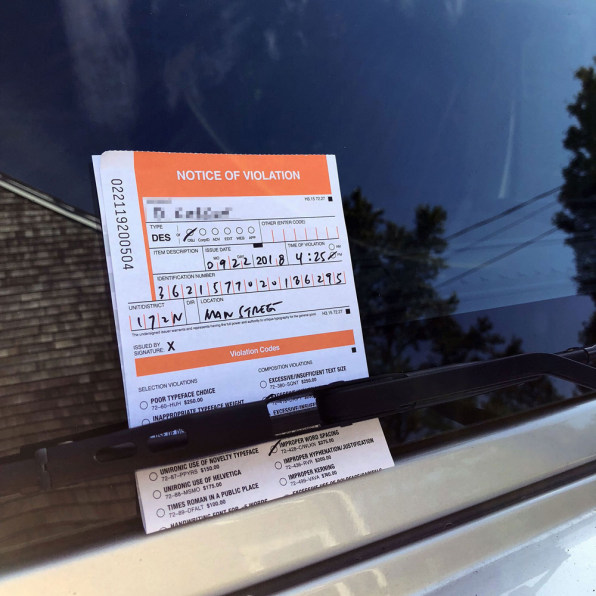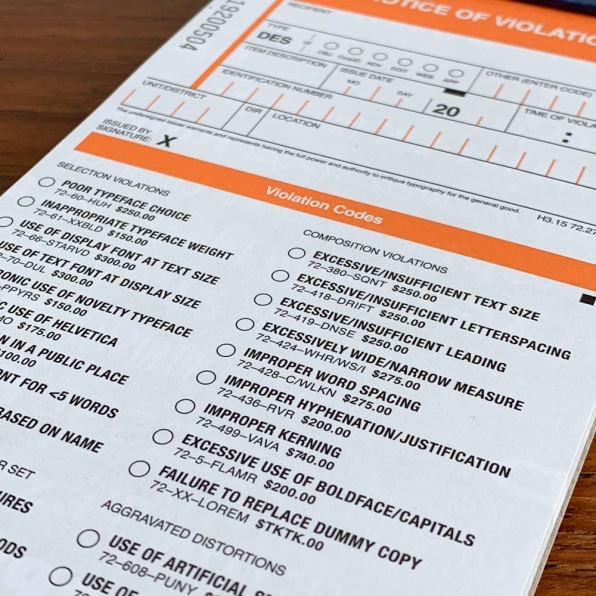Earlier this year I gave a talk at UX London, and it’s no exaggeration to say that it felt like it had taken me my whole career to write it. The talk tackles the assumption among many designers and UX people that UX should be at the center of their company.
Watch the video of my talk below, or read the lightly edited transcript.
The talk you need to hear
In this talk, I’m going to challenge how you think about your profession, your industry and the value that user experience brings to a company. It might be somewhat controversial to people. It might not even be popular, but I think it’s the talk that people need to hear.
“I’m going to challenge how you think about the value that UX brings to a company”
At some point in the past, I was in your shoes. I was at the same stage in my career, in the same discipline, with the same feelings. So, you’re going to like parts of this, and other parts will possibly offend you. The more you feel offended, the more I think you need to hear this. I’m going to ask you to be open minded as I go through things.
This is a list of where I’ve worked and what I’ve done.

The reason I’m showing you this is to make you really see that I was in your shoes, and over the last 10 years, a lot has changed when it comes to how I think about research, about design, about product management, the difference between those things, but most importantly, the role of UX inside any company of any size.
When we first think about UX work, we think about things like commuting, going to work, writing on whiteboards, writing Post-it notes, sprints, workshops. We use Sketch and a whole host of other tools.
But these are not the things that build a great product. These are not the things that make a great product. This talk is about what it takes to make a great product.
It’s really a talk about seeing the forest, not the trees. We’ve a lot to cover, from things in our imagination, to our place in the universe, to some of the lies that we tell ourselves.
It’s high time we grew up
I’m going to start with somewhat of a rant, which is to say that it’s high time we grew up. This is the grand conclusion of the talk, by the way – that we UX people need to stop navel gazing and grow up.
When I say we, I mean everybody here. You can excuse yourself if you’ve never complained to a colleague about not being valued or not being understood. If you’ve never felt that way, you can exclude yourself.
Let’s look at exhibit A. This is Alan Cooper, who if you’re not familiar, is the forefather of our discipline. Alan tweeted this a few weeks ago, and it was the best set up I could ever imagine for the talk I’m about to give. It’s important to remember that Alan is a phenomenal individual and someone, as I said, who defined our craft and deserves a lot of respect and should be listened to.
This is what he tweeted: “There is no such thing as UX design.”
I thought this was a joke, and I thought it was pretty funny, but it turns out it was not a joke. A lot of people went a little bit nuts, and Allen came back on Twitter the next day and explained it.
When he posted this tweet, there were retweets, people agreeing and disagreeing, and rebuttals. There were Medium posts written, very long ones, and there were Medium posts written about those Medium posts.
“We’re having yet another existential crisis about who we are and what we do”
Meanwhile, in company leadership meetings everywhere, this is what’s going on. The CEO is saying, “Has anyone got any important updates from your team?” To which the UX leader says, “Yes, we’re having yet another existential crisis about who we are and what we do.”
You’ve got to remember that people fought to be in that meeting, and design, UX, however you want to describe it, is actually in that meeting. But, you’ve got to put yourself in the shoes of that CEO, and ask yourself whether you want that person having an existential crisis about the value they bring.
Do you actually want them in that meeting? I’ve since been in a lots of these meetings at Intercom, and they’ve taken different shapes over the years. There are leaders from all functions of the company, but no one else is having an existential crisis. No one else, just me.
So, we have to stop. We need to look up and look out.
Things that only exist in our imagination
There’s something much bigger going on. If we look up and look out, we realize that a lot of the things that we think about and value actually only exist in our imagination. This is paper and ink:

You may recognize it as money, but money only exists in our collective imagination. It doesn’t actually exist. It only exists because we’ve agreed in our minds that it has value. If I give you €10, we both agree that that is worth €10. Or, if you go into a shop and give £20 sterling or $10, we’ve agreed that it is worth the same thing, but that thing, money, only exists in our imagination. It doesn’t exist in the world of biology or chemistry or physics. It’s just paper and ink.
When we look at all these things – agile, design thinking, design sprints, lean UX, story points, jobs to be done, personas, user experience – you’ve got to remember that we made this shit up. None of this exists. It’s only in our imagination. Like money, these things have value, but you’ve got to remember that they don’t actually exist.

This is a design sprint in action, and if you look at this photo, you’ve got to ask yourself, what really exists in that room? Oxygen, carbon dioxide, plastic, glass, paper, people. These are the things from biology, from chemistry, from physics, which reminds me of this tweet:
When you look at all these things and realize that we just made this shit up, you’ve got to ask yourself how valuable it is, and how useful it is, and realize that if we made it all up, we can stop. We don’t have to use these things.
Our place in the universe
As you commute to work, write on whiteboards, use Post-it notes, have stand ups and use Sketch, I’m going to tell you that you don’t have to. I want you to free your mind of these things. If you free your mind of the default things that occupy it, you can consider your true place in the universe.

This is Earth, our planet.

This is a picture of Earth, but this is not actually Earth. This is just a picture of it.

This is another picture of Earth, and this picture is no less accurate than the first one. So, it’s important to know that your perspective of something, and your understanding of it, are deeply interlinked.

Only 500 years ago, it was universally understood that the earth was the center of the universe, and that everything rotated around the earth. So, if you lived in that time, which was not that long ago, this perspective would have constrained you. It constrained what our ancestors could learn. If you imagine being there and understanding that this was true, it sets your viewpoint on everything.

In the intervening few hundred years, we’ve learned that we’re actually on the edge of something, which is on the edge of something else, which is on the edge of something else, which is on the edge of something else. That is radically different to how people thought 500 years ago, and it totally changes what you think is possible, or what the human species even means.
“Your perspective of something, and your understanding of it, are deeply interlinked”
You’ve got to apply that thinking to where we are and ask yourself, what does a UX universe look like, and where are we in truly understanding it?

This is a Google image search for UX diagram. You might notice that UX is in the middle of all the pictures. I have drawn many Venn diagrams over the course of my career. I have been boring people to death with Venn diagrams all my life, with UX in the middle.

Here’s a classic example. UX in the middle, business down in the bottom left in red. Marketing, that other small thing, down there in purple, squeezed in between a bunch of other things. All these diagrams look the same.
UX in the middle, then business and technology, and information and content, and marketing, and all sorts of other stuff all around the edge, all flying around the UX thing. If you think this way, just like our ancestors, it sets your viewpoint and changes all your consequent behaviors.

The truth is that UX is not in the center. This is what reality looks like. You have things like research and design, which most people consider to be UX. Then, lots of other functions like product management and engineering, which can sit close to those disciplines. Analytics, biz ops, marketing, sales, customer support, recruiting, finance, HR, I can keep going. All these different functions have a specific thing to do, a specific job to do, and every single function right here is important and valuable, and they should all be viewed equally.
What we do is spend all our time talking about this bottom left piece. We spend all of our energy on it. When I saw Alan Cooper’s tweet, and the amount of energy people put into writing about it, I was like, “Oh my god,” it’s kind of depressing. You could be using that energy to talk to all these other people.

It’s self sabotage, and what’s really in the middle, in most companies, is a leadership team. All these functions have a leader, and those leaderships groups talk, connect one another, understand each other and then things flow back down.
Which raises some interesting questions – are these disciplines important, and are they equal?
The background of a leadership team will actually change this subtly. So for example, if you had a leadership team that had a sales background, sales might have more influence than others. If you work in a company where the leadership team has a marketing background, marketing might have more influence than others. If you work in a company where the leadership came form engineering backgrounds, they may have more influence than others, but in most companies, all these things still exist.
“All these things matter a great deal, and UX is not in the center”
It’s important to remember that all these things matter a great deal, and UX is not in the center. All these disciplines also talk to one another, you won’t be surprised to hear. Engineering talks to sales, and support, and recruiting and analytics. Design talks to a whole bunch of people without talking to leadership necessarily. I could extend this and this diagram could look insanely complicated.
Everyone is talking to everyone, and you can break into these little disciplines and ask yourself what’s inside. All of them will break up into lots of other sub-functions, like marketing will have events and communications, and public relations, and brand, and demand generation and a whole bunch of other things. So, in the same way that we have research analytics, interaction design, content strategy, visual design and all sorts of other stuff, all these functions have there own versions of that.
If you’re anything like I was for almost all of my career, you never really thought about all these other functions. You mapped them, maybe here and there, but you never really thought about them. We spent all our energy talking to ourselves. So, before I found myself in the leadership team, which is where I really got exposure to all these other functions, these are the types of things I thought.

I thought marketing would basically take what we build and announce it. We didn’t involve them in the process. They didn’t have a say or an opinion. We would give them something, and then they would take it to market.
I thought finance paid my expenses. I didn’t think that they might be thinking about the financial health of the whole company. That they might worry about how everyone’s salary might be paid next month or next year, or how much money we were spending.
Sales in my mind had bad practices but the best parties. Support worked in the other building – boring job. Again, I didn’t really think about what happened in that building, I just never went in. And then the last example, HR: “people problems, hope you never meet.”
When I think back about these things, I was naïve, I was biased, I was ignorant, and I was prejudiced. I was all of those things about all those other disciplines, and I never really thought too much about it. I didn’t think too much about it because I was too busy having existential crises with my colleagues about what the hell we even do, and why no one listens to us. I believed that our users should be at the center, and therefore, as a user experience person, we should be at the center. It made sense to me for most of my career.
The biggest lie we tell ourselves
Which leads me on the biggest lie that we tell ourselves. The biggest lie is that we are the voice of the user. That’s the biggest lie.
People in sales teams talk to customers every single day. Many designers might hear that and think “That’s different. They’re talking to sell, whereas when we talk to people, we’re talking to learn.” But that’s just wrong. Modern sales team talk to learn. If you go and talk to the best people in your sales team, in your company, you will discover that they talk to learn.
Sales is changing rapidly. The old way of sales was cold calls, selling people stuff they didn’t necessarily need, all those things. But, modern sales is changing, and the reason it’s changing is because many companies are moving their business model to subscription.
Subscription business means that you actually have to care about the long term. You have to care about relationships. You’ve got to build relationships with people. You can’t just sell and leave. That doesn’t work anymore. The companies with sales teams that still operate that way are not doing well, and the companies with sales team that don’t are doing fantastic. Hence, the rise of SaaS, for example.

It might surprise you that modern sales teams talk about farming a lot. This is what modern sales looks like, they use farming as a metaphor for selling. I can safely tell you that at Intercom, which is a proud product driven company with designers and UX folks as founders and leaders, our sales team know our customers better than our product team. Think about that. In a product driven company, our sales team in many ways, know our product and our customers better than our product team.
The same is true for our support team. Our customer support team talk to customers every single day, and they don’t talk to sell, they talk to understand, learn and find out the problems people have, the features that they’re missing and the ways in which the product is confusing. So, we’re only one voice of the user. An important one, but just one. Here’s a tweet from me, from the end of November:
“Many product people don’t talk to their sales team. This is a critical mistake. Your sales team knows your product failings better than you do. I learned this too late in my career, and I still don’t do it enough. Don’t be me.”
This is really, really important. Don’t be me. I learned this too late. I spent 12 years of my 15 year career not understanding all these other functions. I wasn’t in the real world.
A story about the real world
Here’s a story about the real world. We started a new product category – basically messaging and messengers for business – and now we’re in an increasingly competitive space. People see the success we’ve had to date and realize that there’s a huge market opportunity and huge business opportunity. Business messaging is huge. It’s quickly replacing email as the primary way that internet businesses and customers talk to one another. You won’t be surprised to learned that bots are a big part of that. We have a bot called Operator.
“People see the success we’ve had to date and realize that there’s a huge market opportunity”
We found ourselves in the position of a competitor having a bot feature that we do not have. They have something in their messenger that we do not. Our sales team is telling us that this feature matters. When they talked to customers to help them understand what Intercom can do for them, they quickly learned that this feature is solving a real problem, and we can’t provide the solution, so they don’t go with us, they’ll go with someone else.
But it turns out, this feature is extremely hard to design. It’s not straightforward. We thought and hoped it would be, but it’s not.
We have three options for the team.
- We could launch a solution in a month. We could build a hacked together solution, it would be pretty hard to understand and hard to use, but it would exist.
- We could launch in two months. It would be built well, but it’d still be very rough around the edges. We would have time to do some research, and that research would show us that our solution is still hard to use.
- We can launch in four months, design it really well, and release an easy to understand solution thanks to rounds of research.
So, the question is what should we do? And then, the second thing is, if you ask all the different people around the company what we should do, you get different answers. Research and design will say that we should do option three, it’s a no brainer. Why would you launch something that’s hard to understand and hard to use?
Product management and marketing will typically push for something more aggressive in terms of timeline. They’ll say that we can get something out sooner. We have an opportunity to talk to our potential customers about it. The competitive gap doesn’t exist anymore, and it’s not that bad. The solution is not that bad.
And sales, and most of leadership, would pick option one. The reason they’d pick option one is because they can sell it. If it exists and it’s out, we can sell it. It doesn’t matter if it’s hard to use, we can fix that later. Make it better later but sell it now.
“Do you want the thing that doesn’t exist, or do you want the thing that exists?”
The reason leadership will care about this is because they care about the financial health of the company. The reason that sales people care about this is because a lot of them are compensated on sales volume, so this will actually increase their salary.
No one here is wrong. This is only a recent revelation for me. No one here is wrong. Five years ago, I would have fought tooth and nail for option three. Fought, fought, fought and been extremely dogmatic about it. I’d go to town on people to say that we have to do option three. It is the only right option for our customers. But I’m changing. I err on the side of option two, but somebody could probably persuade me to go with option one.
The most interesting question to ask is, what would our customers want? If we present these three options to our customers and said, “Which one do you want?” They’d pick option one. Do you want the thing that doesn’t exist, or do you want the thing that exists?
“I’ll take the thing that exists.”

It’s an important insight. We say that we’re the voice of the customer, and yet, we’re pretty disconnected probably from what they might actually choose.
It turns out, we’re taking the middle option. We’re going to ship something that’s somewhat hard to use.
I’ve talked to our design team and our research team. We’re knowingly shipping something that’s going to be hard to understand. When customers see it, they’ll probably be a bit confused about how it works. The design problem is extremely hard, and we just didn’t have enough time to get it right.
The point is that we’re making a deliberate, conscientious choice. We’re making a multidisciplinary decision. We’re talking to everybody in the company to understand what the right decision for the company is, not what the right decision for the design team or even the product team.
Where do we go next?
If you recognize that everyone has something important to say, and you’re not the single voice of the user, you can actually make some intellectual breakthrough. Which leads me with where we go next.
Right at the start, I said that these are the things that we do. Commuting to work and writing on whiteboards and Post-its, standups, and workshops and Sketch. You can add to that list all day long, and yet, they don’t make a great product.
These are not the things that make a great product. I ask you to free your mind of these things. Free your mind of the defaults that are possibly dragging us all down and realize that UX is not in the center. We are not the only voice of the user.
It takes everyone to build a great product. The last question really is, what do we build, and how do we decide what to build?
“Everyone has a unique job, and everyone needs to understand everyone else’s unique job.”
At Intercom, everyone has input in this decision. Obviously we have a product management team, research team, design team and engineering team. I’m sure everyone here is familiar with this. I imagine that for almost everybody this is the way you work. All these people are involved in helping to decide what we build. We also have analytics helping us understand usage. They provide us with tons of quantitative insight into what people do and do not do, which helps us decide what to build.
We also have our sales team. What our sales team does is synthesize and summarize the hundreds and hundreds of conversations they have with prospective and existing customers. I was telling people this last night, and they were horrified at the idea that the sales team would effectively act as a research team. But we’ve helped them learn how to do it, and they’ve helped us help them. So, our sales team brings us lists of things that they think we should build next.
Our support team does exactly the same thing. Again, they’re having hundreds of conversations every day with existing customers. They know our product’s failings better than we do, and they bring us prioritized lists on what we should work on next. We also have marketing members embedded in product teams. Our marketing team are a key collaborator in the product teams. If we have a PM and a designer working on a specific thing, there is someone in product marketing also working on that thing in partnership with them.

This is what everyone does. This slide is a bit of a disaster, but I’m going to walk you through it. Everyone has a unique job, and everyone needs to understand everyone else’s unique job. It took us a long time to get to this place, by the way. Sales, starting at the top, is the voice of prospective customers. Support is the voice of our existing customers. Marketing is the voice of the market, the competitive landscape, how much things should be, pricing. Something again, I thought very little about for most of my career, which is, how much should our product cost? Turns out, that matters a lot, and I’d never really thought about it.
Marketing are the voice of the market. How we price, how we position, how we talk about things, driving awareness of the things that we make. Again, if you have an amazing product that no one’s ever heard of, do you actually have an amazing product? Or, if you have an amazing product that no one’s willing to buy or pay for, do you have an amazing product?
The analytics team looks at usage. Existing usage, finding patterns. And then, if you look at the bottom four, our PM team, our research team, or design team, and our engineering team all have a very specific job to do.
“When we were working with the sales team, we realized that we spoke different languages.”
Our product management team’s job is to understand the problems we need to solve. Deeply, deeply understand the problems. Talk to customers and talk to them again. Talk to the sales and support team. Synthesize all of their findings, really understand those problems and then prioritize them. It’s our job to take the lists from sales and support, and prioritize.
Then, our design and engineering team are paired, where our design team’s job is not to understand the problems, it’s to deliver solutions to those problems. Take the problems as we’ve understood them, design and help engineering build great solutions to those problems. Then, our engineering team’s job is to deliver those solutions with dates. So, estimates of when we can do something lies in engineering.
Everybody has a very, very specific job to do. However, it’s incredibly collaborative. And in truth, back to the earlier diagrams, everyone talks to everybody, and everyone helps everyone, because everyone respects each other, respects their disciplines and knows that everybody has something different, unique and valuable to bring to the conversation.
It works incredibly well, and it was insanely hard to get to this place. We started a few years ago helping PMs, researchers, designers and engineers disambiguate what they do. We said, “Okay, you do that, and you do that. You collaborate on both. If you’re accountable for anything, you’re accountable for that thing, and they’re accountable for that thing.”
One example is that when we’re working with the sales team, we realized that we spoke different languages. When they first started bringing these lists back to us, they were very specific feature requests.
Sometimes, the feature requests were insanely detailed, and sometimes they said things like, “Better analytics.” Customers need better analytics. They’re bringing these feature requests, and we when we spoke, we spoke in the world of jobs to be done.
“What are the problems our customers have? Then we can solve them for them”
Intercom historically has been a big proponent of jobs to be done, and that was the language that we spoke. Turns out, by the way, jobs to be done is one of the most difficult things to understand that I’ve ever come across. If you can understand it, internalize it and use it well, it’s an amazing tool, but it’s hard to understand.
And so, when we talked in the world of jobs to our sales team, they just didn’t understand what we were talking about, and so we were just talking over one another. So instead, we came to this middle ground, which is problems to be solved. It’s simple. What are the problems our customers have? Then we can solve them for them.
It takes everyone to build a great product, but as we know in life, no one gets everything they want.
Stop navel gazing and grow up
So remember this grand conclusion – it’s high time we UX people stop moaning. Stop navel gazing, and grow up. I really believe this.
This is a seminal moment in the history of this discipline. There are different ways this thing can go, and I think we need to stop doing this. Stop having this existential crisis about what we do and who cares, and who values what, and who talks to who, and instead go out and talk to other people. All these other people. Analytics, biz ops, marketing, sales, support, recruiting, finance, HR. Talk to these people.
The question I’ll leave you with, is what are you going to do? Are you going to get to your whiteboard, use your Post-its, have standups, hold workshops and use Sketch?
When you walk into work, before you breeze past six colleagues and sales, and then hit up Sketch, I want you to stop and just think about all this. I want you to look up, look out and realize that we’re not the center.
If you do that, and if we all do that, and start collaborating with all these other teams, and talking to them more than we talk to each other, I think that will be the next great leap for our industry.
Thank you.
The post The end of navel gazing appeared first on Inside Intercom.

from The Intercom Blog https://www.intercom.com/blog/the-end-of-navel-gazing/










































